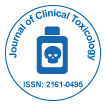
Journal of Clinical Toxicology
Open Access
ISSN: 2161-0495

ISSN: 2161-0495
Commentary - (2025)Volume 15, Issue 1
Drug-Induced Liver Injury (DILI) is one of the most significant and challenging adverse drug reactions in clinical medicine today. It remains a leading cause of acute liver failure and one of the most frequent reasons for drug withdrawal from the market. Biomedical toxicology plays a central role in understanding the mechanisms of DILI, identifying risk factors, and guiding the development of safer pharmaceuticals.
The liver, as the primary organ for drug metabolism, is highly susceptible to toxic insult. It metabolizes most xenobiotics via enzymatic processes that can produce reactive intermediates, which, if not adequately detoxified, may cause cellular damage. DILI can be categorized into two main types: intrinsic (predictable and dose-dependent, such as acetaminophen toxicity) and idiosyncratic (unpredictable and dose-independent, often linked to genetic or immunologic factors). While intrinsic toxicity is well-characterized and preventable, idiosyncratic DILI remains poorly understood and represents a major concern for clinicians and drug developers.
Biomedical toxicology integrates multiple scientific disciplines—molecular biology, pharmacogenomics, pathology, and systems biology—to unravel the complex mechanisms of DILI. For instance, toxicogenomics has enabled researchers to identify genetic polymorphisms that increase susceptibility to DILI, such as certain variants in the HLA-B*57:01 gene, which is linked to flucloxacillin-induced liver injury. These discoveries are critical in advancing personalized medicine, allowing clinicians to screen patients for risk alleles prior to prescribing potentially hepatotoxic drugs.
Preclinical toxicology studies are a vital part of the drug development pipeline, providing early indications of hepatotoxic potential. However, current animal models often fail to predict idiosyncratic DILI due to species-specific differences in drug metabolism and immune responses. As a result, biomedical toxicologists are increasingly turning to alternative models, such as human liver organoids and microphysiological systems (organ-on-chip technology), which better mimic human hepatic architecture and function.
Furthermore, clinical toxicologists and pharmacovigilance systems rely on biomarkers for early detection and diagnosis of DILI. Traditional markers like ALT (alanine aminotransferase) and AST (aspartate aminotransferase) are nonspecific and often indicate damage after significant injury has occurred. Newer biomarkers such as microRNA-122, glutamate dehydrogenase, and keratin-18 fragments show promise for earlier and more specific detection of hepatocellular injury, enhancing the clinical management of DILI.
Regulatory agencies like the FDA and EMA have increasingly emphasized the importance of understanding hepatotoxicity risks. Biomedical toxicology contributes to establishing safety thresholds, labeling requirements, and risk mitigation strategies. In some cases, toxicological findings have prompted the reevaluation or withdrawal of drugs from the market—underscoring the real-world impact of toxicological science on public health.
Despite the progress, significant challenges remain. The unpredictable nature of idiosyncratic DILI calls for more robust databases and global reporting systems. Collaborative efforts like the Drug-Induced Liver Injury Network (DILIN) are crucial in collecting standardized data to refine diagnostic criteria and improve causality assessment tools such as the Roussel Uclaf Causality Assessment Method (RUCAM) [1, 5].
In conclusion, biomedical toxicology is indispensable in addressing the complexities of DILI. From mechanistic studies to clinical translation, it provides the tools and knowledge necessary to predict, detect, and manage liver injury due to drugs. As the field evolves with advances in omics technologies and human-relevant models, it holds the promise of minimizing DILI risks and ensuring drug safety in increasingly diverse patient populations.
[Crossref]
[Crossref]
Citation: Shankar R (2025). Molecular and Cellular Mechanisms of Drug-Induced Liver Injury in Biomedical Toxicology. J Clin Toxicol. 15:586.
Received: 03-Jan-2025, Manuscript No. JCT-25-37437; Editor assigned: 06-Jan-2025, Pre QC No. JCT-25-37437 (PQ); Reviewed: 20-Jan-2025, QC No. JCT-25-37437; Revised: 27-Jan-2025, Manuscript No. JCT-25-37437 (R); Published: 07-Feb-2025 , DOI: 10.35841/0976-4860.25.15.586
Copyright: © 2025 Shankar R. This is an open-access article distributed under the terms of the Creative Commons Attribution License, which permits unrestricted use, distribution, and reproduction in any medium, provided the original author and source are credited.